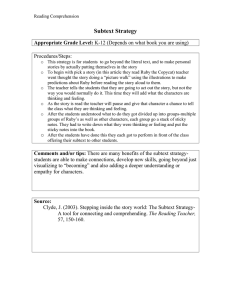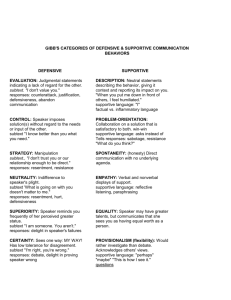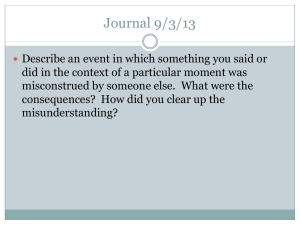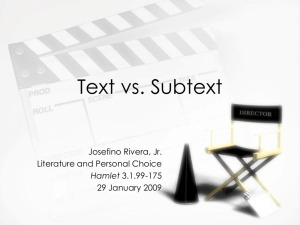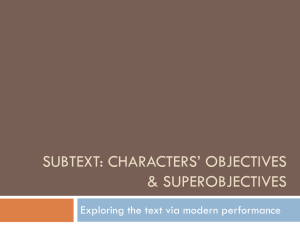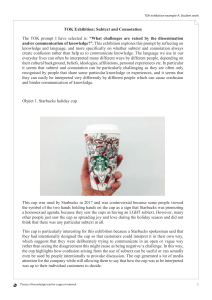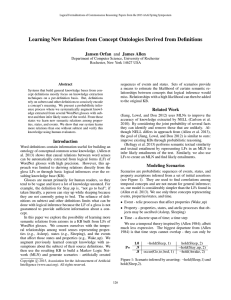Subtext Exercises
advertisement
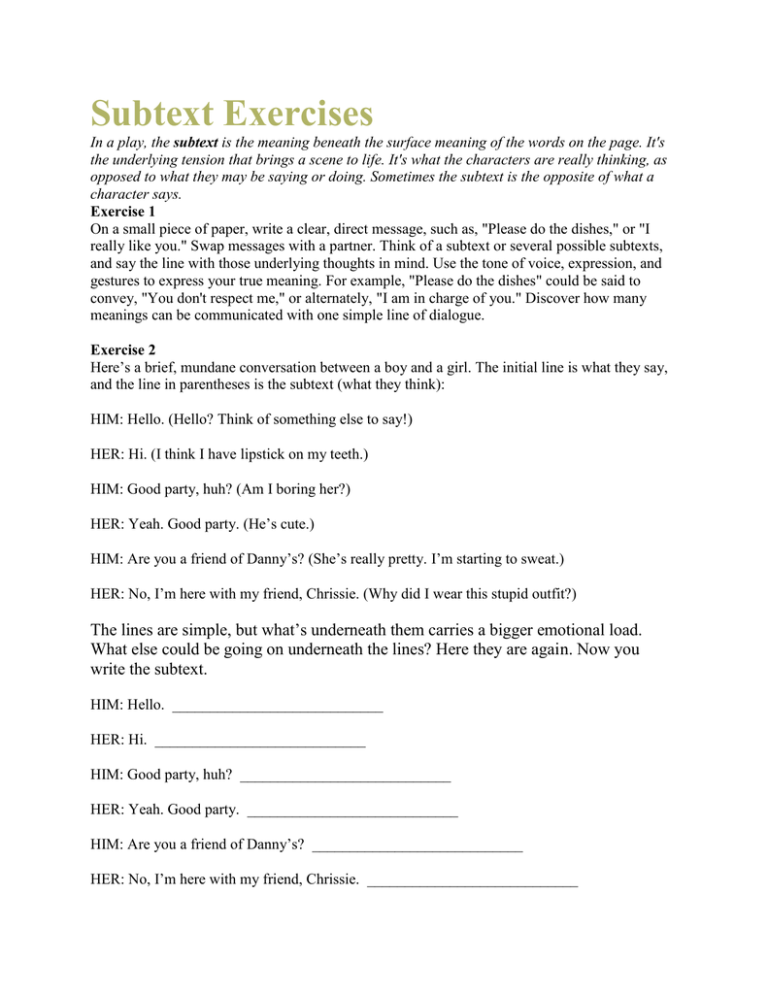
Subtext Exercises In a play, the subtext is the meaning beneath the surface meaning of the words on the page. It's the underlying tension that brings a scene to life. It's what the characters are really thinking, as opposed to what they may be saying or doing. Sometimes the subtext is the opposite of what a character says. Exercise 1 On a small piece of paper, write a clear, direct message, such as, "Please do the dishes," or "I really like you." Swap messages with a partner. Think of a subtext or several possible subtexts, and say the line with those underlying thoughts in mind. Use the tone of voice, expression, and gestures to express your true meaning. For example, "Please do the dishes" could be said to convey, "You don't respect me," or alternately, "I am in charge of you." Discover how many meanings can be communicated with one simple line of dialogue. Exercise 2 Here’s a brief, mundane conversation between a boy and a girl. The initial line is what they say, and the line in parentheses is the subtext (what they think): HIM: Hello. (Hello? Think of something else to say!) HER: Hi. (I think I have lipstick on my teeth.) HIM: Good party, huh? (Am I boring her?) HER: Yeah. Good party. (He’s cute.) HIM: Are you a friend of Danny’s? (She’s really pretty. I’m starting to sweat.) HER: No, I’m here with my friend, Chrissie. (Why did I wear this stupid outfit?) The lines are simple, but what’s underneath them carries a bigger emotional load. What else could be going on underneath the lines? Here they are again. Now you write the subtext. HIM: Hello. ____________________________ HER: Hi. ____________________________ HIM: Good party, huh? ____________________________ HER: Yeah. Good party. ____________________________ HIM: Are you a friend of Danny’s? ____________________________ HER: No, I’m here with my friend, Chrissie. ____________________________
